Table of contents
General considerations on the Peladan method
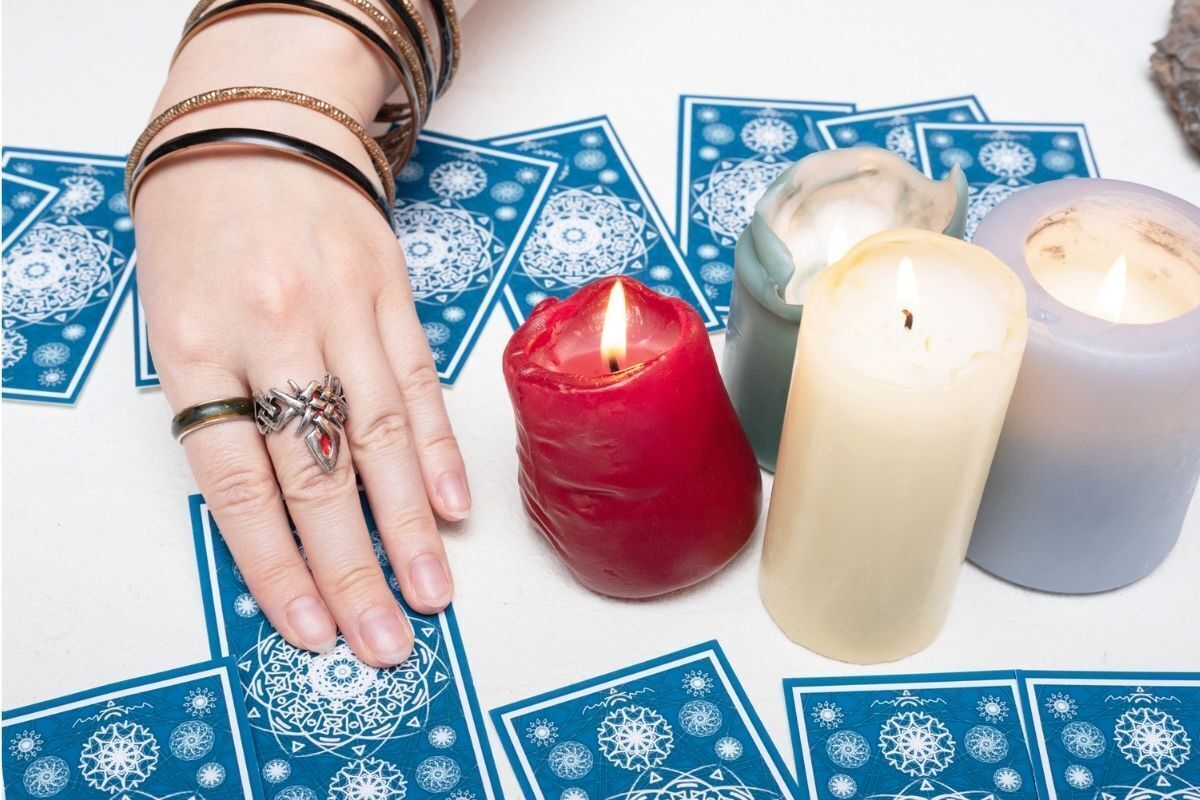
Using the Tarot as a leaven of self-knowledge or a way to spy on what is happening in situations of the past, present and future involves knowledge of many methods of drawing. One of these quite important methods is the Péladan method.
In general, the Péladan method is a very popular drawing technique in Romance-language countries, especially those whose official language is Portuguese or Spanish. This method is ideal for obtaining quite precise answers on topics circumscribed within a specific period.
Although this method is not so popular, since most of the literature on Tarot comes from English speaking countries, it is very effective and powerful. In order for you to have access to this ancient and powerful knowledge, we bring you all the necessary information so that you can incorporate it in your oracular and self-knowledge practices.
We will show its history and origin, giving tips on how to use it. At the end of the article, we also bring an overview about other very popular Tarot drawing methods, so you can get to know them and use them whenever you want. Check it out!
The Tarot Game and the Peladan Method of Drawing
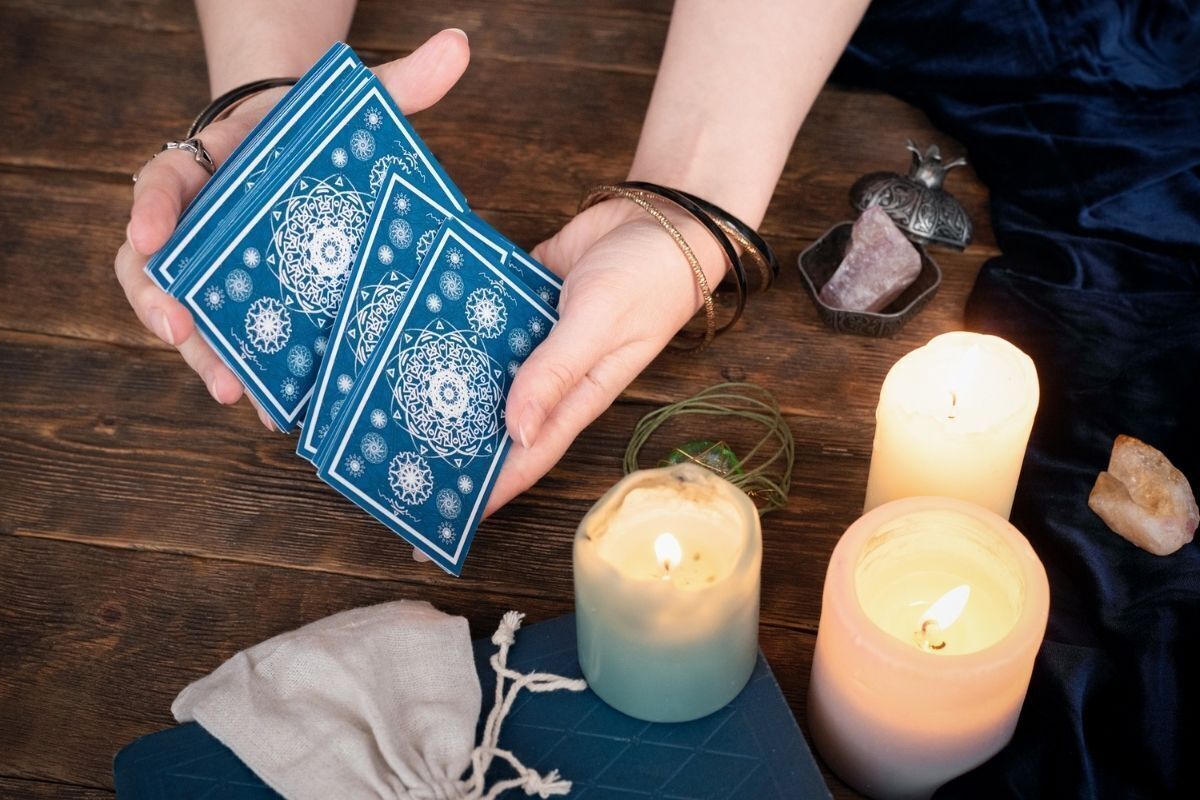
Tarot is a divinatory method and a tool of self-knowledge that has become increasingly popular. Playing a Tarot involves methods and draws. Therefore, we will start from the Peladan method, describing its mode of operation, as well as its origin, to address tips on how to play the Tarot.
Moreover, we treat about the Tarot game with occults and the messages related to the Peladan method. Check it out!
What is the Peladan Method
The Peladan method is the name given to a way of using the Tarot. It consists of a five-card draw, preferably with major arcana, although it is also acceptable to use all the arcana of the Tarot when practicing this method.
In a very simple way, 5 cards are drawn, arranging them in the form of a cross (Simple Cross). The Peladan method is extremely effective for answering questions on quite specific topics situated at a particular time.
Each of the 5 cards is referred to as Houses, and each is assigned specific associations. Therefore, they are known by the following names: affirmation, negation, discussion, solution, and synthesis.
The origin
The Peladan Method was developed by an eccentric French writer and occultist named Joeséphin Péladan (born March 28, 1858 and died June 27, 1918). Péladan was born in the city of Lyon and grew up in a very devout Catholic family. Due to his Christian background, Peladan ended up modeling his run on the crucifixion of Jesus.
Known as the Peladan Method, this drawing became popular through the work of the Swiss occultist Oswald Wirth, the book called The Tarot of the Magi, translation of the French work Tarot des imagiers du Moyen Age. He tells the historical accounts that Oswald learned this method through Stanilas de Guaita.
How to play tarot
If you want to learn how to play Tarot, it's important to understand that it works by drawing cards. Once the method for drawing cards has been decided, the fortune teller shuffles them, cutting them into small groups with the help of the left hand, while concentrating on the question or topic of the consultation.
Then, the cards are placed on a surface, such as a table, to be interpreted. From there, the fortune teller observes the images and numerical values arranged on the cards, for it is this information that will give access to the intuition that decodes the messages so that they can be interpreted.
During the reading, it is essential to consider the position of the card, as well as its relationship with the subject of the reading and the cards that are close to it. Generally, people believe that the Tarot is used exclusively to make predictions about the future.
This is a myth, because what the Tarot does, in fact, is to serve as a guide so that the fortune teller can interpret the messages brought by the cards according to the energies of the moment of consultation.
How to play tarot with occult
Playing the Tarot with the occults is nothing more than receiving a hidden message brought by the sum of the houses. To do so, you will need to follow the following steps:
1) Add up the sum of Houses 1 and 2. The result will bring you a message for your situation in the Present;
2) Make the sum of the 3rd and 4th houses, and as a result you will have a message which will show how the facts indicated by the Tarot will unfold.
You can also get two more hidden messages:
1) The first additional hidden message is obtained by adding up the major arcana that were presented in the drawing;
2) The second message can be obtained by summing the 4 arcana that appeared in the drawing from house 1 to house 4. By summing them, you will obtain the arcane of house 5.
Step by Step of the Peladan Method
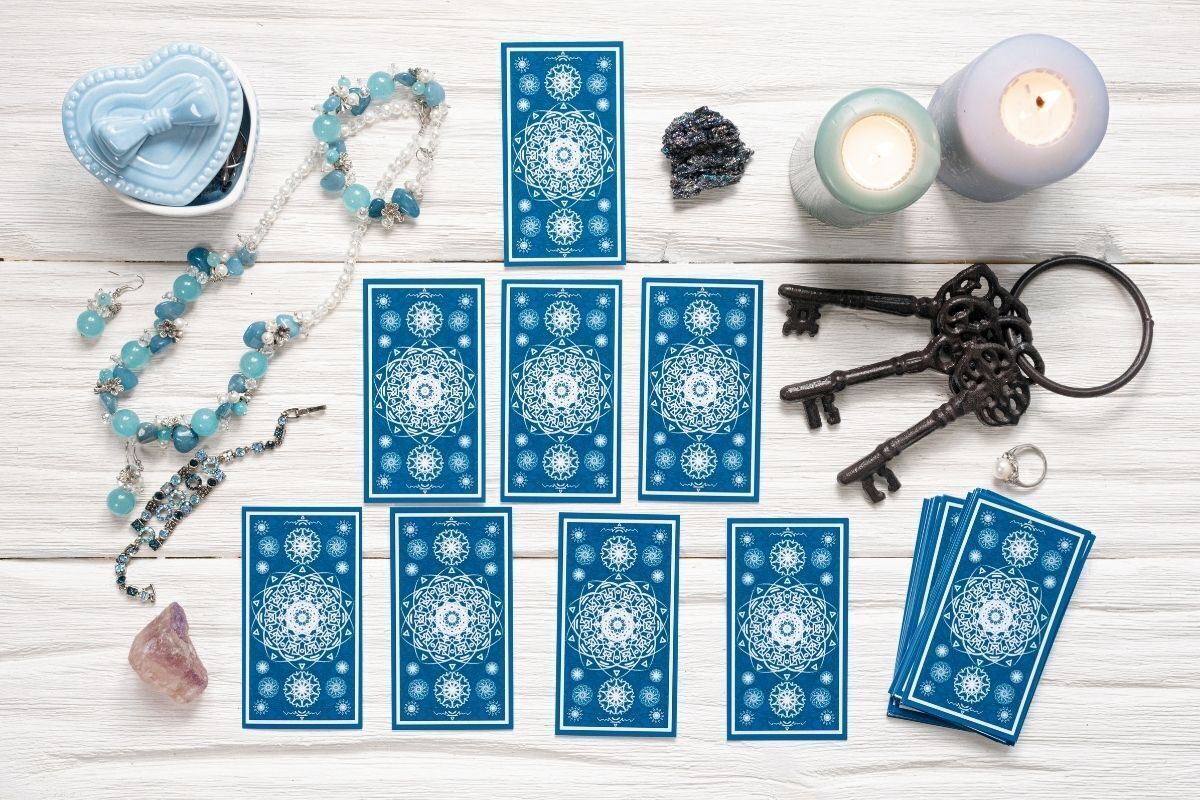
If you wish to learn how to use the Peladan Method during your Tarot readings, you will find below all the steps you will need to understand how this technique works. Follow along!
First
To begin the Péladan method, the consulter needs to make a precise description of what he wishes to know. Then he must shuffle the cards, choosing 4 cards that will be interpreted.
According to
In the second step, the cards are arranged as follows, forming a cross design:
1) The first card is to the left of the fortune teller, representing house 1;
2) The second card is on the right. It represents house 2;
3) The third card is on top of the other two. It represents house 3;
4) Finally, the fourth card is below all of them. It represents the 4th house.
The fifth card will be in the center when it is chosen after all the others have been interpreted.
Third
Once the four cards are arranged, it is time to interpret them. Each house has a specific function, so it is necessary to pay close attention to them when deciphering their meanings.
Interpretation in the Peladan Method
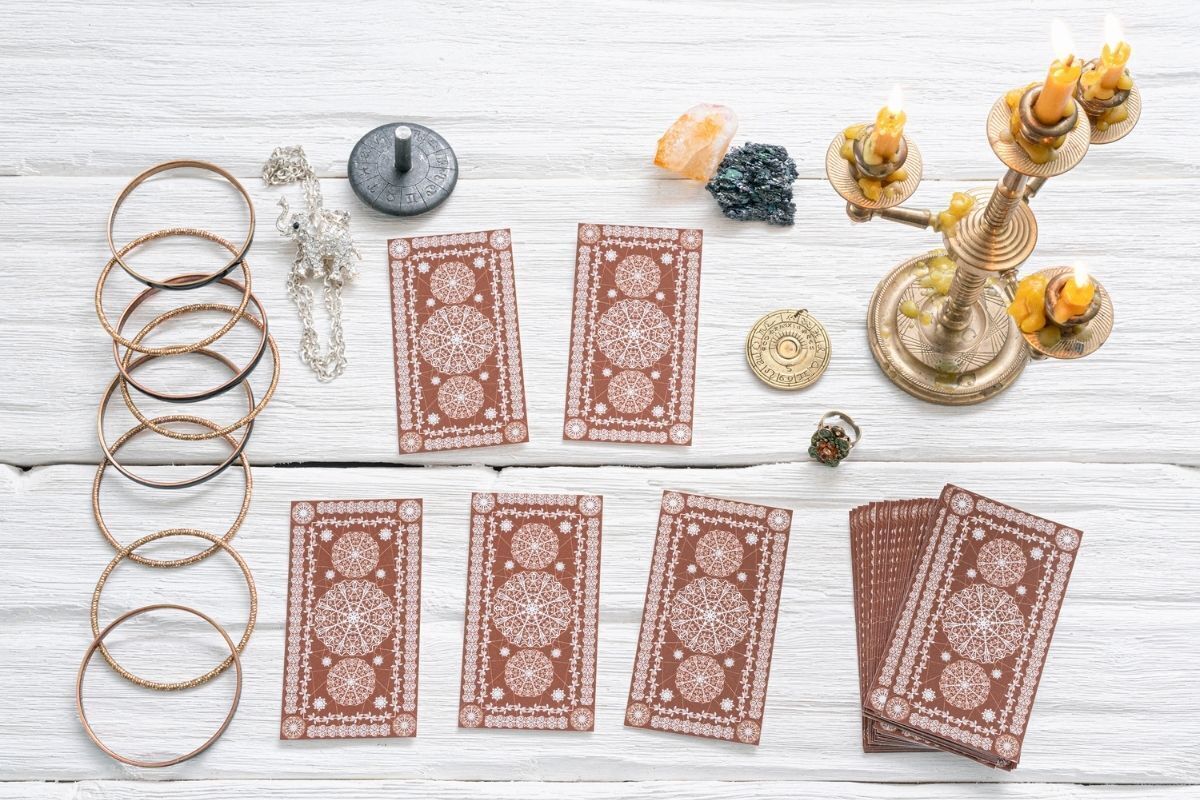
In order for you to be able to interpret each of the 5 cards of the Peladan method, we describe the meanings of each one of them below. Since each card is also associated with a moment in the crucifixion of Jesus, we have included details about it so that you can fix them. Check it out!
The 1st house: Affirmation
The house number 1 corresponds to affirmation. It represents the moment when the good thief was rewarded by Jesus and joined him in Heaven. This card is connected to the pros of the situation and to everything that is in favor of the consulter.
Therefore its message is positive, bringing favorable aspects or active and affirmative factors related to the question or its time. It also shows the resources available in the present, who or what the consulter can count on, and what guidance it is possible to have regarding the subject of the question.
The 2nd house: Negation
In the second house, the most important vibration corresponds to negation. It represents the evil thief who refused to repent and therefore was denied entry into paradise. It is the card of the cons, of the warnings and of that which can negatively influence the life of the consulter.
Therefore, the message brought by it is negative and contrary, depicting hostilities or factors that prevent the unfolding of the present situation. It shows who is working against the goals of the consulter, and also indicates the path that should not be followed.
Thus, it is a card that shows what is missing or not available to the consulent at this time.
The house 3: Discussion
The number 3 house is the house of discussion. It is inspired by the Judgment card and symbolizes the angel blowing his horn to announce the day of final judgment. This card brings with it the notion of what the consulter must do and the path to be followed
In addition, it is a key point in solving the problem and takes into account the other information from the letters in the run.
House 4: Solution
Solution is the central theme brought by the house number 4. It also represents the resurrected bodies that responded to the angel's call.
Thus, it brings with it the sentence, the result or possible outcome of the situation, if the consulter decides to follow the advice of the card 3 and keep in mind the pros and cons of houses 1 and 2, respectively. The unfolding of the situation will also depend on the card 5, which will bring the summary of everything.
The 5th house: Synthesis
Finally, the 5th house corresponds to the synthesis. Following Christian mythology, it symbolizes the crucified Christ. This card symbolizes the basis of the matter, including its most salient features.
It also reveals the attitudes and intentions of the consulter regarding the issue of the drawing. Thus, it shows how he feels about the situation, as well as the significance of the issue and the lessons the consulter can learn from it. It also puts all the other cards into context, revealing what is happening and bringing deeper meaning about the situation.
The fifth card must be drawn last, after the other 4 cards have been turned over. To find it, you must add up the numerical values of each card. This way you will know exactly which card will occupy this position. In case the sum of the arcana is greater than 22, you will have to reduce the result of the sum to two digits.
For example, if you drew the cards The Magician (1), The Moon (18), The World (21), and The Sun (19), you would find that 1 + 18 + 21 + 19 = 59. Then, you will take the number 59 and add its two digits (5 + 9 = 14). Thus, the card 5 will be the arcanum number 14: Temperance.
Other Types of Tarot Drawings
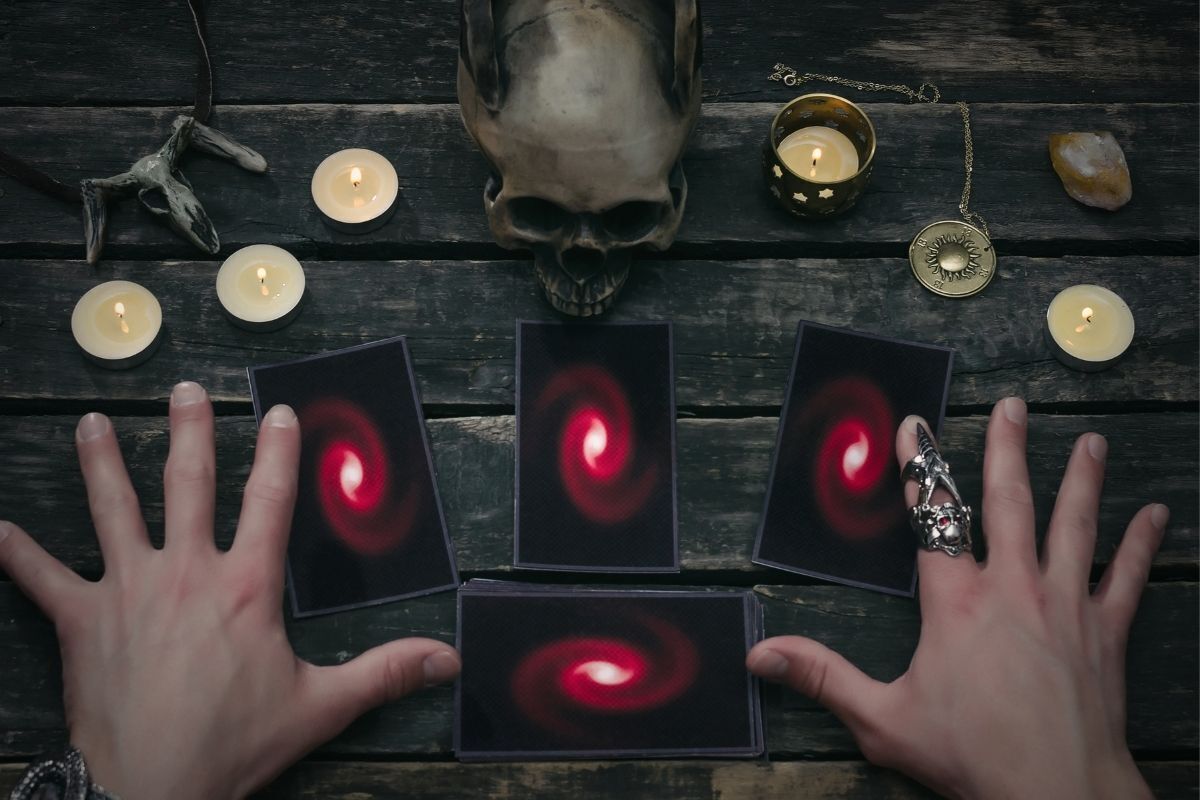
In this section we present other types of drawing used in the Tarot. Among them are the Drawing by Three, Cross Drawing, Kairallah Drawing, Aphrodite's Temple, Tower Connection and Horseshoe, so that you can practice the Tarot according to the situation indicated by the consulter. See!
Output per three
As the name suggests, the three-card draw requires that three cards be drawn. In this type of reading, you can interpret the cards as in a sentence. The first card will be the subject, the second will be the verb, and the third card will play the role of the complement. You can also vary the value of each square by following the following schemes:
- 1) positive, 2) negative and 3) synthesis;
- 1) goal, 2) means and 3) consequences;
- 1) me, 2) the other, and 3) perspectives;
- 1) an alternative, 2) another alternative, and 3) final evaluation;
- 1) the cause, 2) the development and 3) the consequences.
Cross print
Similar to the Peladan method, the cross shows more angles to interpret a situation. The big difference is that in this type of drawing, the consulter draws 5 cards at once, without having to do the summation process of the Peladan method to discover the card of the 5th house.
You can interpret each house differently, some suggestions for each house are:
- 1) The event, 2) what it causes, 3) when and where it occurs, 4) how it occurs, and 5) why it occurs;
- 1) The person, 2) the timing, 3) possible outcomes, 4) the challenges in overcoming the problem, and 5) advice for dealing with the situation.
Kairallah Range
Kairallah a 5-card method that can be used to supplement information from someone's birth chart. Each of the five cards is part of a house. These houses, in turn, correspond to the following:
1) The consulter;
2) The current conditions of your life;
3) The prognoses for the coming days;
4) The best course of action or conduct to be taken;
5) The big picture of the issue.
In this run, it is possible to adapt the functions of houses 1, 2 and 3 according to the needs of the consulter and the theme of the question.
Temple of Aphrodite
The Temple of Aphrodite is ideal to show how the relationship of a couple is. This drawing works as a mirror in which the issues of the couple on the physical, emotional and rational planes will be reflected.
This method requires 7 cards, which are arranged in 2 columns. The first column is on the left and represents He, and the second represents She. For homosexual couples, you can let the consulter choose which column will represent which part of the couple.
The cards in the left column are, from top to bottom: 1, 2 and 3. The cards in the right column are: 4, 5 and 6. At the bottom and between the columns will be the card 7. The function of each square is:
- 1 and 4: the mental plane (thoughts);
- 2 and 5: the affective plane (emotions);
- 3 and 6: the physical/sexual plane (attraction);
- 7: result of the couple's interaction and its prognosis.
Tower connection
The Tower Connection is used to work ruptures and changes in expectations. In it, 7 cards are drawn, each one left in a house. The functions of the houses are, according to tarologist Teca Medonça:
- 1) the access door;
- 2) the light of consciousness;
- 3) light of reason;
- 4) the upper plane;
- 5) that which was destroyed;
- 6) what needs to be reconstructed in the action;
- 7) what needs to be reconstructed in the personality.
Horseshoe
The Horseshoe drawing is used to evaluate the sequence or development of a relationship or situation. 7 cards are used in this drawing. The name of this drawing comes from the curved format in which the cards are arranged, which resembles the horseshoe of a horse.
The cards are arranged in the shape of an inverted V, in which the 1st house is in the lower left portion, following until the right end, where the 7th house is. Its functions are:
- 1) the past;
- 2) the present;
- 3) the near future;
- 4) the obstacles;
- 5) the attitudes of others;
- 6) the path of overcoming;
- 7) the final result.
If you are looking for objective and temporal answers, the Peladan method can help you!
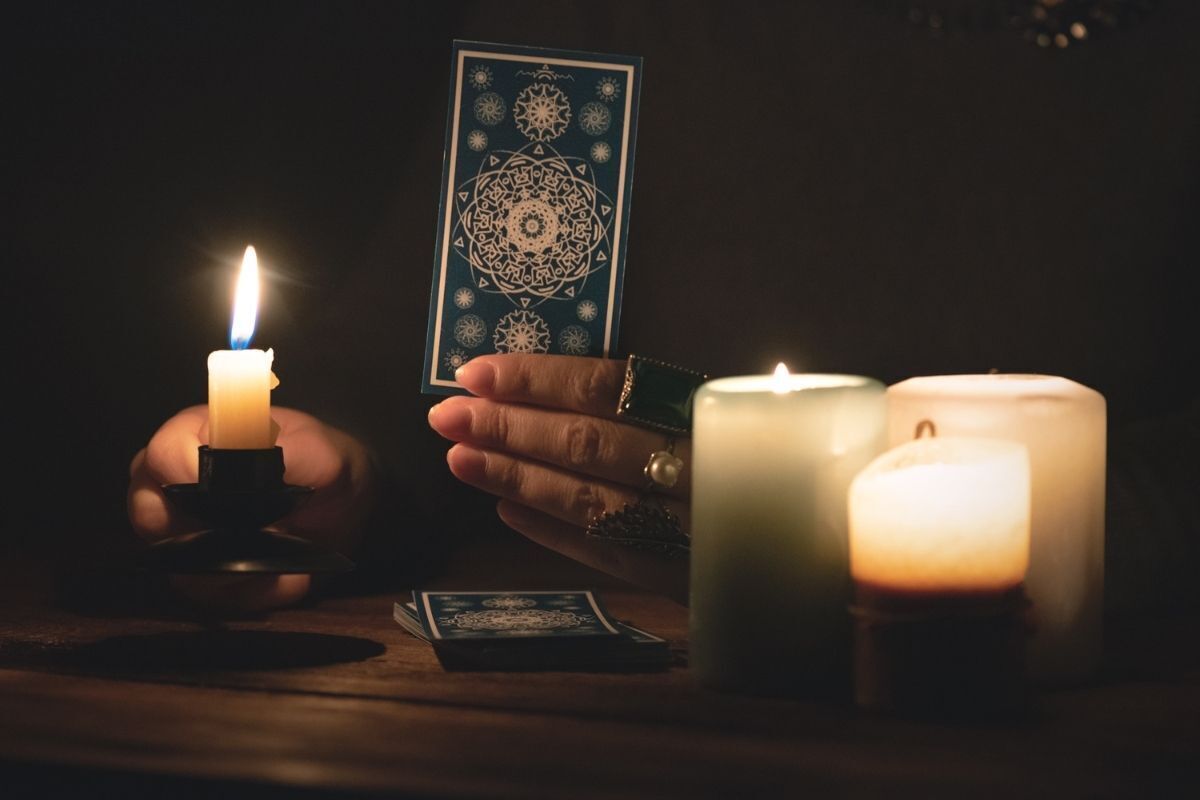
The Peladan Method is an excellent drawing for those seeking objective and temporal answers. Based on the drawing of the Cross, this method carries a very clear message that will shed light on a situation that has troubled the life of the consulter.
As we have shown throughout the article, by presenting the pros, cons, discussion, solution and synthesis of the issue, he will point a clear path for the consulter to find the best possible outcome to the situation that disturbs him.
So, whenever you need help for something quite on point and in a very objective manner, follow the tips in this article and use this method as the answers will be given to you!

